On to Richmond in 1862: The Peninsula Campaign
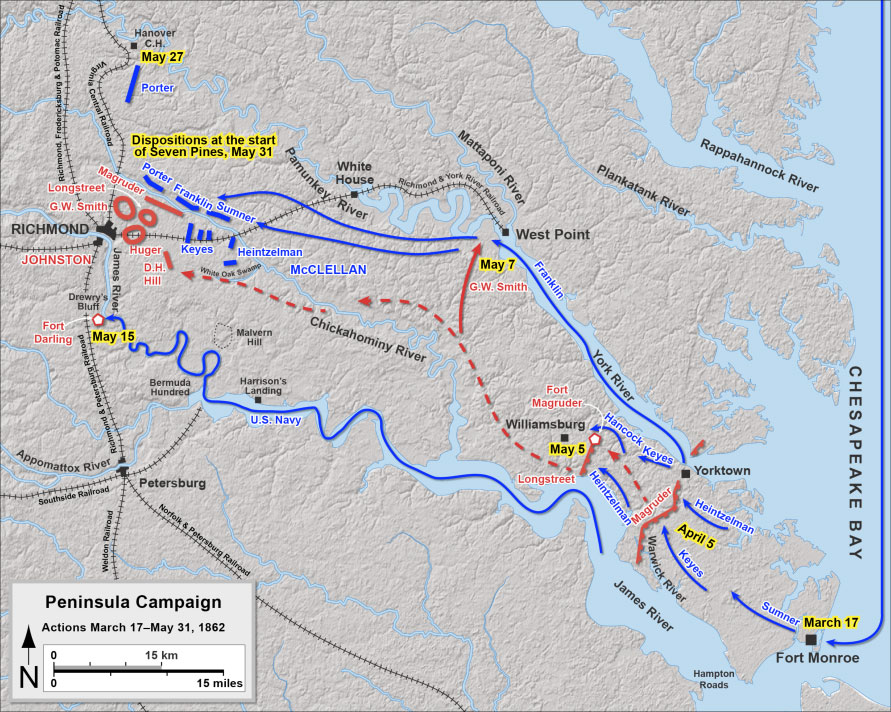
to bypass Confederate defenses along Bull Run, General McClellan used the US Navy to transport the Army of the Potomac to Fort Monroe and marched up the Peninsula to Richmond
Source: National Oceanographic and Atmospheric Administration (NOAA), the Monitor After the Battle of Hampton Roads
In 1861, the Confederacy had achieved its primary war aim: survive as an independent nation. The Union had failed in both political and military efforts to re-absorb the seceding states, though President Lincoln had successfully kept Maryland, Missouri, and Kentucky from officially leaving.
The Confederacy had moved its capital from Montgomery, Alabama to Richmond after Virginia joined the Confederacy. The placement of the Confederate capital just 100 miles south of Washington, DC made it the primary target of the Union army.
After its victory at Manassas, the Confederate Army fortified a defensive line along Bull Run and the Occoquan River. Cavalry patrolled far in front of that line from outposts at Munson's Hill in Arlington County and other viewpoints; the Confederates controlled most of Fairfax and Arlington counties. The Union army occupied little more than Alexandria, but clearly intended to make another march on to Richmond.
After Manassas, the focus remained on a military solution. There would be no viable options for political compromise until it was clear one side had the capacity to force the other into submission. The primary questions after the July, 1861 battle at Manassas were: when would the Union Army move, how would they attack Richmond, and would the Confederacy protect Richmond or collapse after its capture?
President Lincoln picked a new commanding general, George McClellan. He organized and trained the Union Army of the Potomac, the force intended to seize Richmond, but failed to communicate to Lincoln or to the Secretary of War when he planned to shift from defending Washington DC to attacking Richmond. In January 1862, a frustrated President Lincoln said "If General McClellan does not want to use the Army, I would like to borrow it for a time..."1
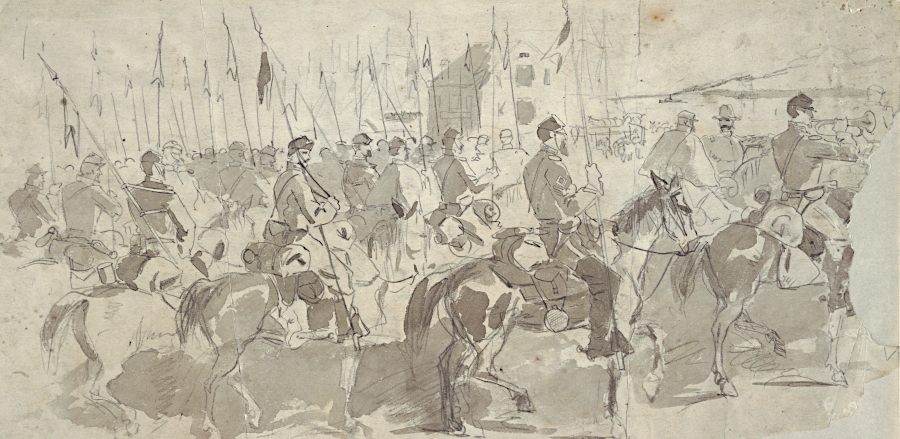
Union troops sailed down the Potomac River from Alexandria/Washington to Fort Monroe in 1862
Source: Smithsonian Institution, General McClellan's Sixth Cavalry Regiment, Embarking at Alexandria for Old Point Comfort
McClellan consistently overestimated the number of troops in the Confederate Army, and sought to minimize fighting that would result in dead/wounded soldiers. Rather than attack the Bull Run/Occoquan defensive line directly, McClellan took advantage of the Union's naval superiority and shipped the Army of the Potomac to a new starting point, Fort Monroe.
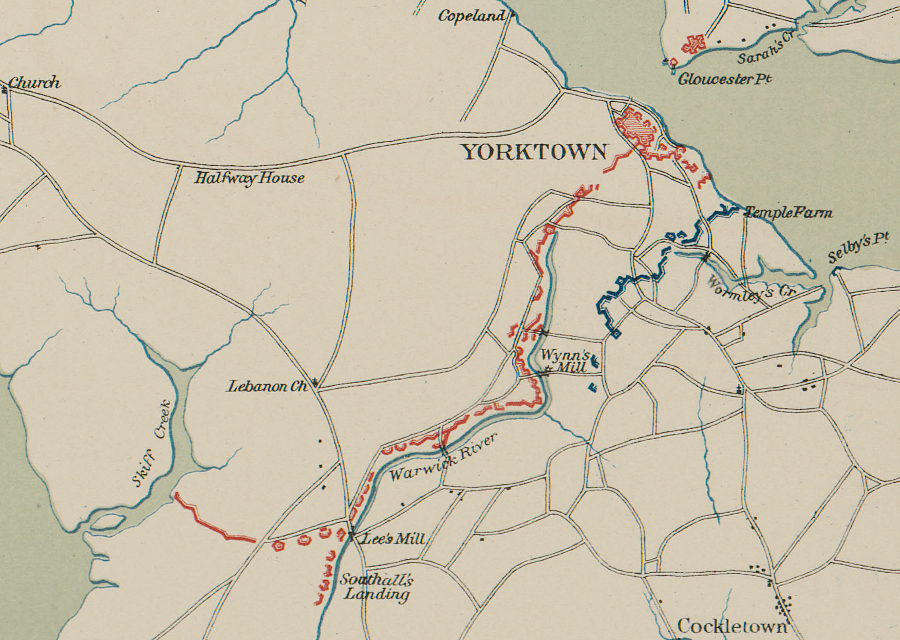
Confederates delayed McClellan's march up the Peninsula, fortifying and then abandoning a line at Yorktown
Source: US War Department, Atlas to accompany the official records of the Union and Confederate armies, Southeastern Virginia and Fort Monroe Showing the Approaches to Richmond and Petersburg (1862)
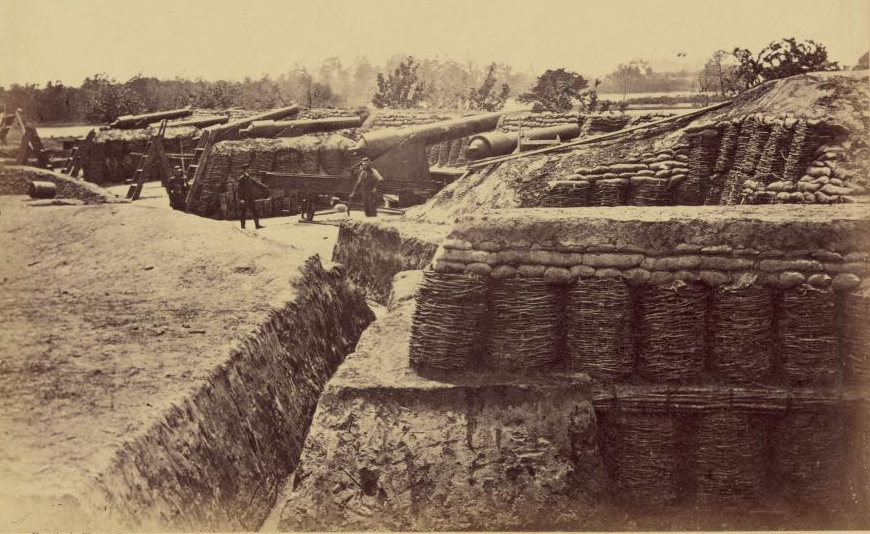
Confederates fortified a line across the Peninsula and delayed McClellan's attack in 1862
Source: Alexander Gardner, Gardner's Photographic Sketch Book of the War
Fort Monroe had been constructed at the site of Point Comfort. That location was visited by the newly-arrived English colonists in 1607 before they sailed up the James River to establish Jamestown, and various forts had been constructed there in the 1600's and 1700's. Fort Monroe was built after the English demonstrated during the War of 1812 that an enemy could control the Chesapeake Bay.
The Rip-Rap shoals near Fort Monroe were fortified as well. Fort Calhoun (later renamed Fort Wool) was built on the Rip-Rap shoals despite the difficulty and cost of creating a solid foundation, because cannon located at Fort Monroe could not reach the shipping channel of the south bank of the James River. Fort Calhoun/Wool allowed cannon to be placed closer to the shipping channel, so the United States could block European enemies from sailing up the James River.
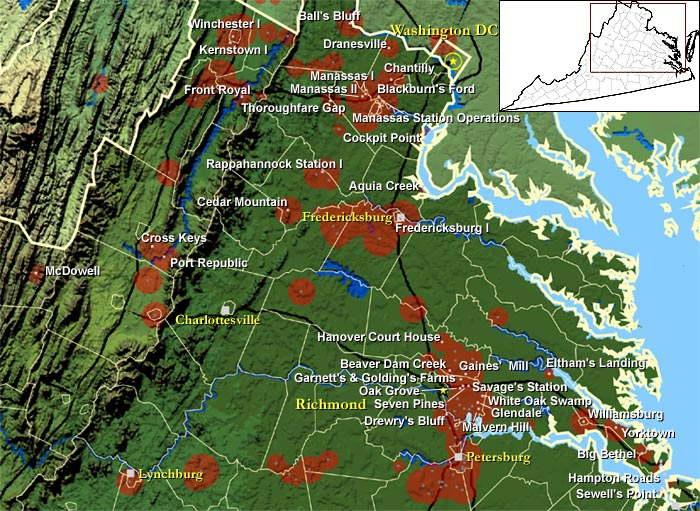
nearly all battles in Virginia were associated with an "On to Richmond" drive to capture the Confederate capital
Source: National Park Service, American Battlefield Protection Program
The Confederates had a different way to block the Union Navy from moving up the James River. The CSS Virginia was based at the Gosport Navy Yard. The Confederate ironclad ship sailed down the Elizabeth River and into Hampton Roads, and had a very brief career sinking wooden Federal warships there.
The arrival of the USS Monitor ended the military advantage of the ironclad CSS Virginia. The first "battle of the ironclads" ended with the CSS Virginia retreating into the Elizabeth River, ensuring the safety of the Federal fleet. President Lincoln reminded his Army and Navy officers that seizure of Norfolk and destruction of the Confederate warship would protect the left flank of the Union forces, as they moved up the James River and on the Peninsula towards Richmond.
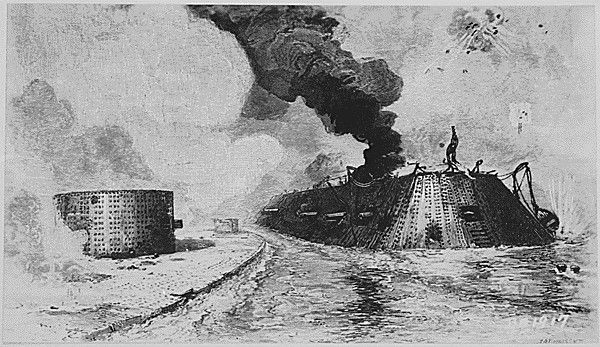
the USS Monitor could not destroy the CSS Virginia, and it threatened the wooden ships of the Union Navy until Federal forces seized Norfolk and the Confederates destroyed their ironclad
Source: National Archives, Battle between the Monitor and Merrimac, Hampton Roads, Virginia
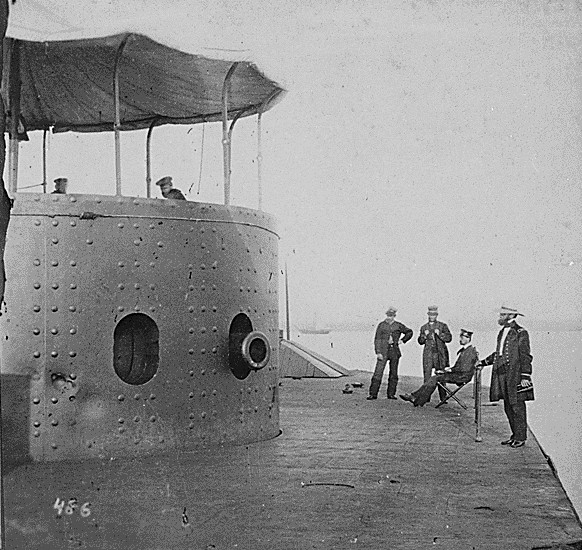
a cannonball from the CSS Virginia struck the turret of the USS Monitor, but created only a dent
Source: National Archives, The Original Monitor after her Fight with the Merrimac
When Union forces landed at Norfolk, the Confederates blew up the CSS Virginia at Craney Island and abandoned efforts to control the mouth of the James River. The Union Navy soon steamed up that river to Drewry's Bluff, where obstructions in the river and Confederate cannon on high bluffs were able to stop further movement until the fall of Richmond in 1865.
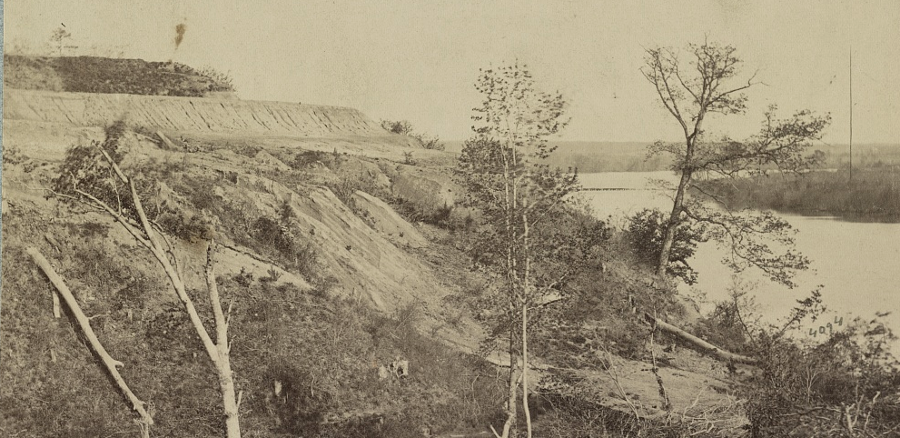
Confederate cannon, high on the riverbank at Fort Darling on Drewry's Bluff, and obstructions in the James River blocked the Union Navy from moving upstream to Richmond between 1862-65
Source: Library of Congress, Fort Darling, Drewry's Bluff, James River, Va.
The Union forces moved very slowly up the Peninsula towards Richmond, until McClellan's troops were camped close enough to hear the bells of the city churches. He sought to minimize casualties, but the Confederates got a new commander when General Joseph E. Johnston was wounded at the Battle of Seven Pines.
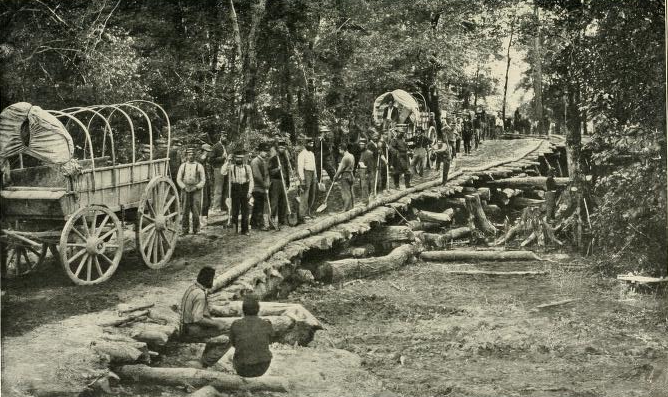
Federal forces crossed the Chickahominy River on the rickety Grapevine Bridge in 1862 during the Peninsula Campaign
Source: The Photographic History of the Civil War,
A Victory Over Swamp and Flood (p.278)
The new leader, Robert E. Lee, took great risks. He attacked McClellan multiple times, in a series known as the Seven Days battles. Though the Confederates absorbed more casualties, the more-powerful Union Army retreated and abandoned the 1862 attempt to seize Richmond. McClellan's Peninsula Campaign ended in failure.
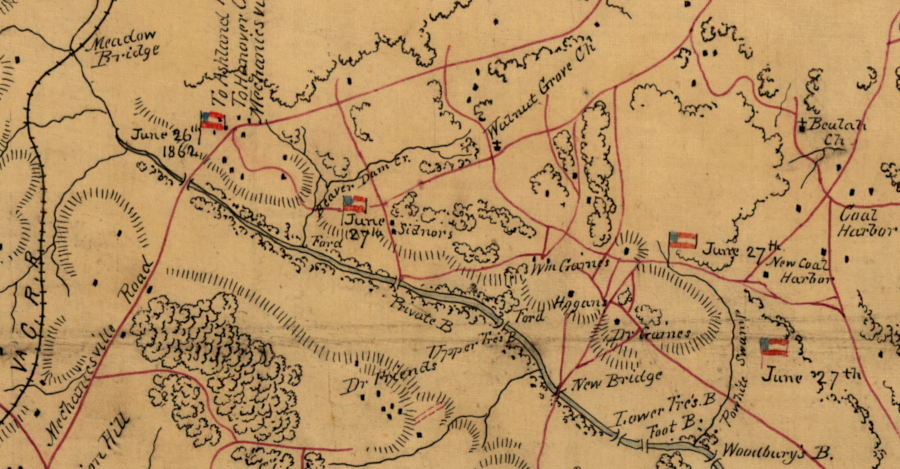
Gen. Robert E. Lee forced the Union Army south of the Chickahominy River in the Seven Days battles, almost managing to destroy the isolated Fifth Corps at the Battle of Gaines Mill
Source: Library of Congress, Position of Richmond, Va. (1862)
Confederate President Jefferson Davis and General Robert E. Lee recognized that the Confederacy would not be able to win a war of attrition. After it was clear that McClellan was frozen in place, they developed a strategy to cross the Potomac River, invade the north, and demonstrate to England and France that the Confederacy should be officially recognized as an independent nation.
The Confederate strategy was to demonstrate its ability to maintain its independence and defend its boundaries, in order to get military and financial support from Europe. The support of the French during the Revolutionary War had been essential to the success of the American Revolution, and the Confederates hoped to mimic that success in their "Second American Revolution."
Lincoln recognized the threat and developed a counter-strategy; he prepared to expand the war aims on the North. Rather than simply seeking to maintain the union as one single nation, he decided to announce that the Union would start to abolish slavery in the South.
Once the war became a conflict over slavery as well as secession, political support for the Confederacy would be limited in Europe. Popular opinion there was strongly anti-slavery. English and French officials would be unable to provide substantial support to the Confederacy, if the two sides fighting the American Civil War were defined as pro-slavery and anti-slavery. Lincoln's plans to issue his Emancipation Proclamation were postponed until the Union won a military victory, so the announcement would not be viewed as a desperation measure reflecting Union weakness.
Lee left only a small force on the outskirts of Richmond to keep McClellan from moving forward, then marched north to the Potomac River. A different Union army intercepted the Confederates, but was defeated at Second Manassas. Lee then moved across the Potomac River, invading the north. McClellan moved his forces rapidly by ship again, this time north to Washington DC.
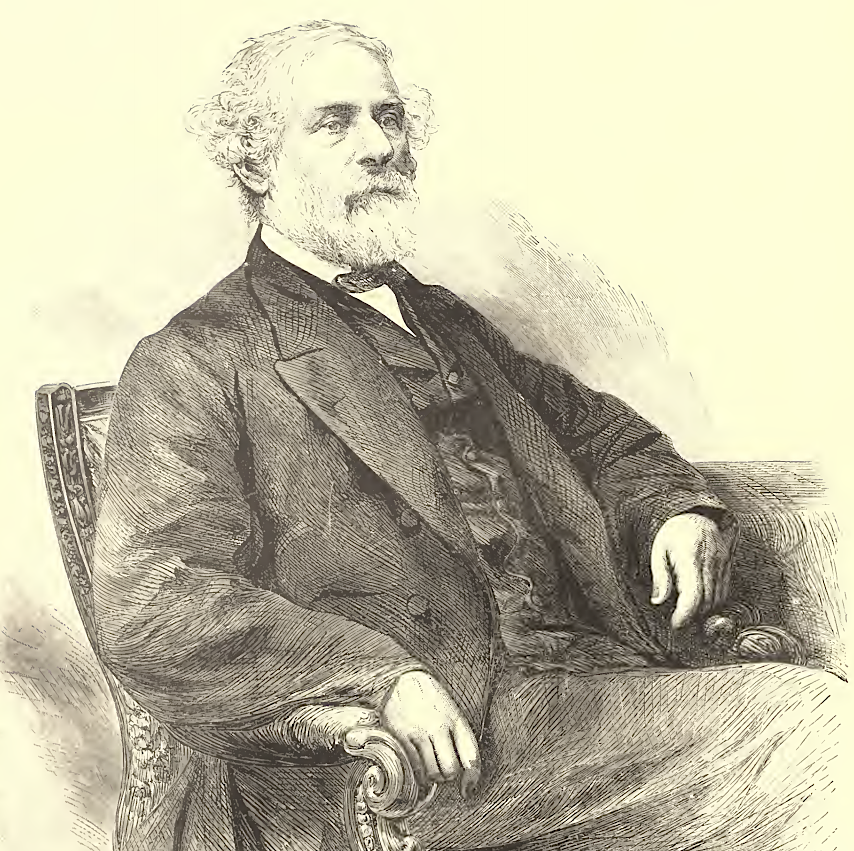
General Robert E. Lee first took command of the Army of Northern Virginia during the Peninsula Campaign in May, 1862
Source: Archive.org, Frank Leslie's illustrated history of the Civil War (p.80)
The armies met again at Antietam, fighting a battle that became the bloodiest single day in the Civil War. Though there was no clear-cut Union victory, Lee retreated back into Virginia. That was sufficient for Lincoln to issue the Emancipation Proclamation in September 1862, freeing slaves in much of the southern states - though not in the areas controlled by the Union Army, such as Alexandria and Norfolk.
The failure of the Peninsula Campaign thus had a dramatic impact on the basis for the Civil War. Had McClellan captured Richmond in May-June, 1862, then the Confederacy may have negotiated a return to the Union that would have permitted retention of slavery.
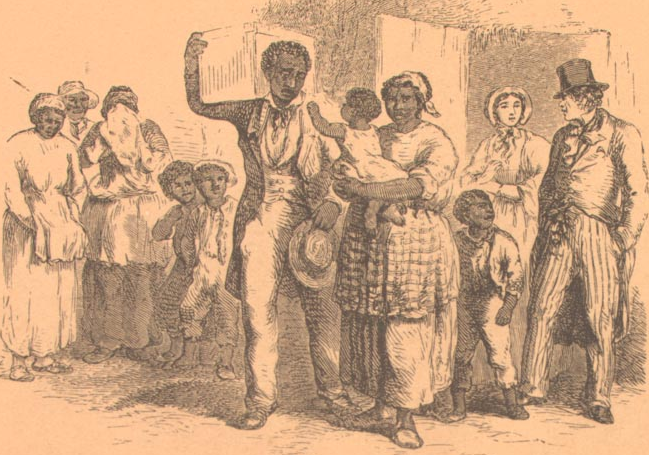
the fundamental issue that caused the Civil War was slavery, and the expansion of the "peculiar institution" into territories that would become future states
Source: Library of Congress, Abolition, Anti-Slavery Movements, and the Rise of the Sectional Controversy
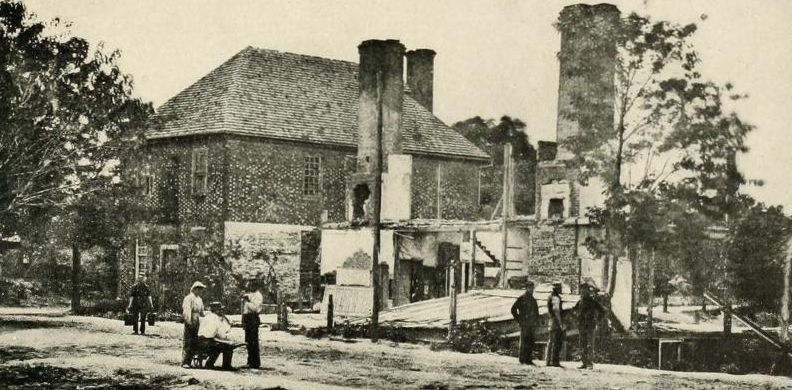
the Nelson House in Yorktown (shelled by the American army during the Revolutionary War) was used by Confederate officers during construction of the Warwick Line, which delayed McClellan's advance up the Peninsula in 1862
Source: The Photographic History of the Civil War, Whence the Defense Was Directed (p.260)
After the military failures of the Peninsula Campaign and Second Manassas, President Lincoln needed a way to keep European nations from aiding the Confederacy and to mobilize support for the war in the northern states.
One fear was that Napoleon III would succeed in seizing control of Mexico, leading to French and perhaps British recognition of the Confederacy. Fortunately for the Union side in America's Civil War, the Mexican army won a victory on May 5, 1862, ending the French march from Vera Cruz to Mexico City. That event created the justification for Cinco de Mayo celebrations 150 years later.2
President Lincoln sought to block European involvement and reshape the war aims of the Union by issuing the Emancipation Proclamation in a preliminary form on September 22, 1862. Expanding the objectives of the war to eliminate slavery kept France and England on the sidelines, and altered the way the defeated Confederate states finally were "reconstructed" after the war ended.
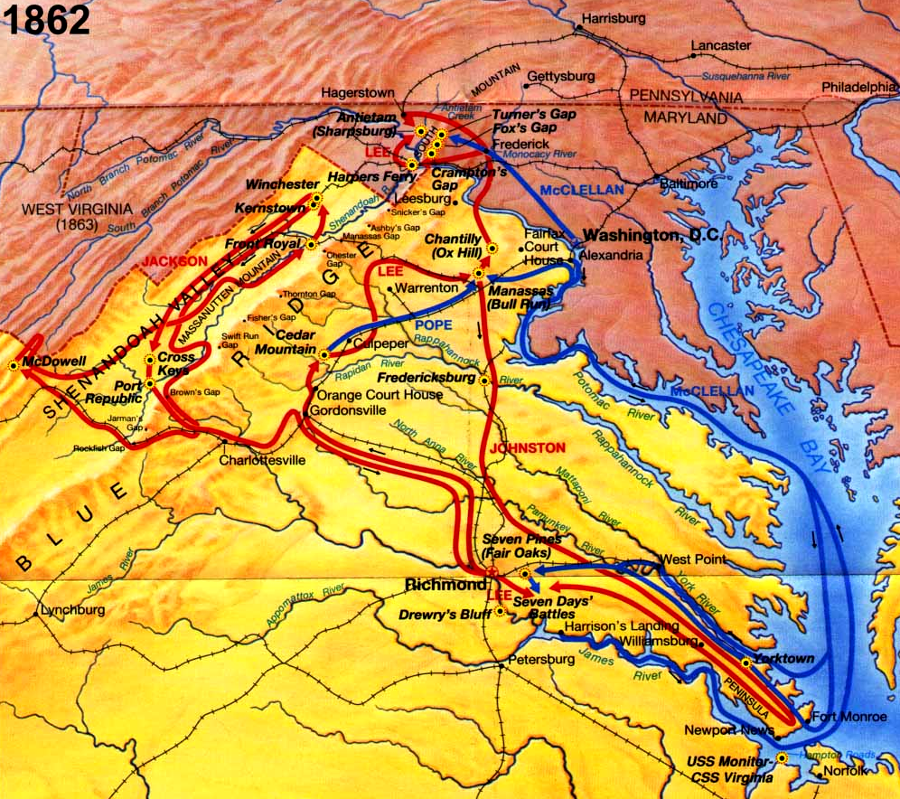
after General Lee fought the Seven Days battles and blocked the Union advance during the Peninsula Campaign, the Confederates seized the initiative and invaded the north - only to be stopped at Antietam
Source: National Park Service, The Civil War at a Glance
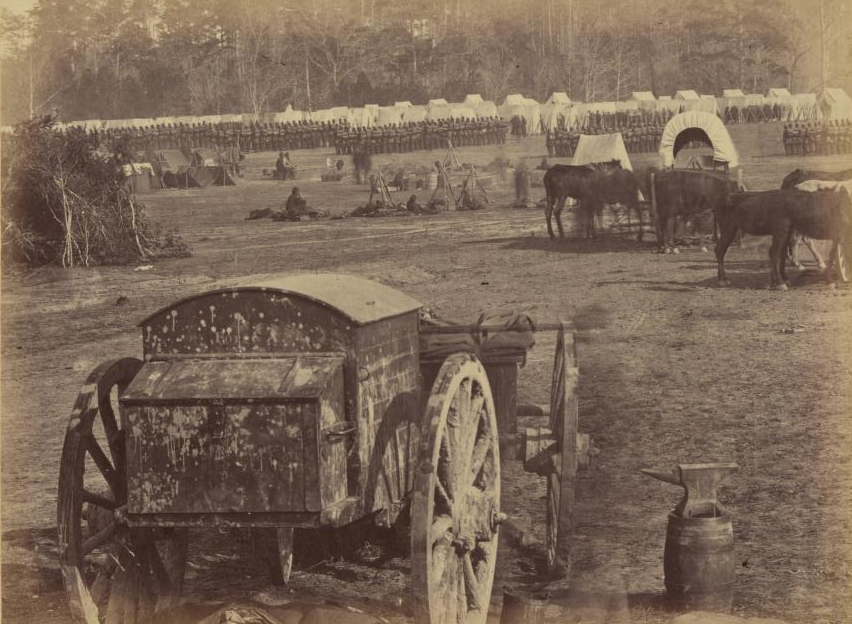
after Confederates retreated from Yorktown, Union ships brought supplies to Cumberland Landing on the Pamunkey River
Source: Alexander Gardner, Gardner's Photographic Sketch Book of the War
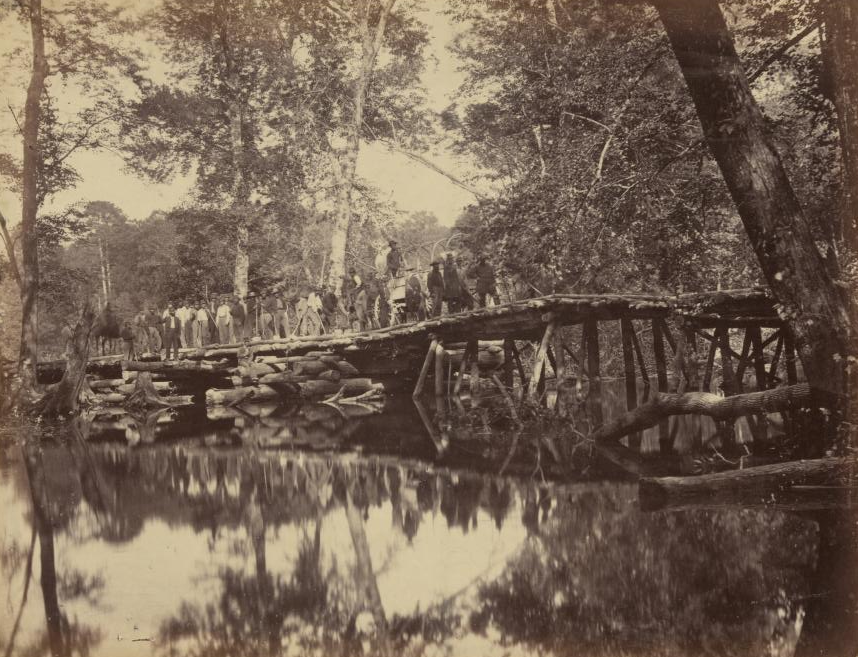
General Robert E. Lee sought to defeat pieces of the Union Army when it was divided by the Chickahominy River
Source: Alexander Gardner, Gardner's Photographic Sketch Book of the War
Links
- Civil War Maps
- Peninsula campaign map - note that Union forces used both the York and James rivers to bring supplies to the armies.
- Encyclopedia Virginia
- Library of Congress
- Public Broadcasting System (PBS)
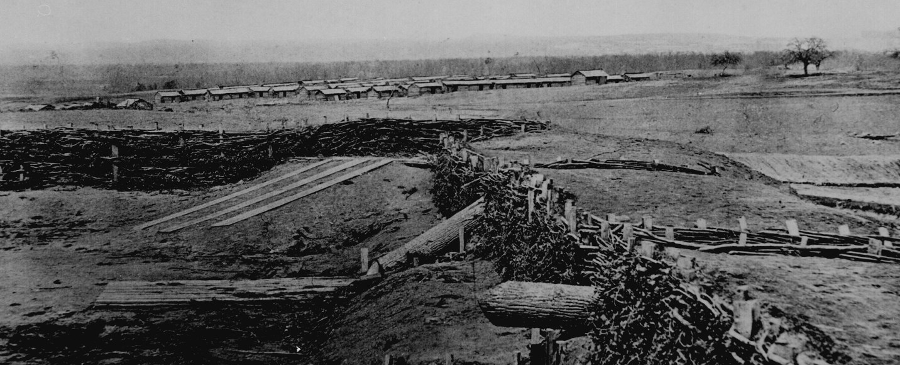
when Confederates moved their resources from the Bull Run defensive line to the Peninsula in February 1862, tree trunks were used to pretend cannon were still in place
Source: National Archives, Confederate "Quaker" guns-logs mounted to deceive Union forces-in the fortifications at Centreville, Va., March 1862
References
1. Geoffrey C. Ward, Kenneth Burns, The Civil War, Knopf Doubleday Publishing Group, 2009, p.82, http://books.google.com/books?id=hsKLPs5XqtQC (last checked October 10, 2014)
2. "We get Cinco de Mayo wrong. But we're not wrong to celebrate it," Washington Post, May 3, 2019, https://www.washingtonpost.com/opinions/we-get-cinco-de-mayo-wrong-but-were-not-wrong-to-celebrate-it/2019/05/03/7d15659e-6dbb-11e9-8f44-e8d8bb1df986_story.html (last checked May 5, 2019)
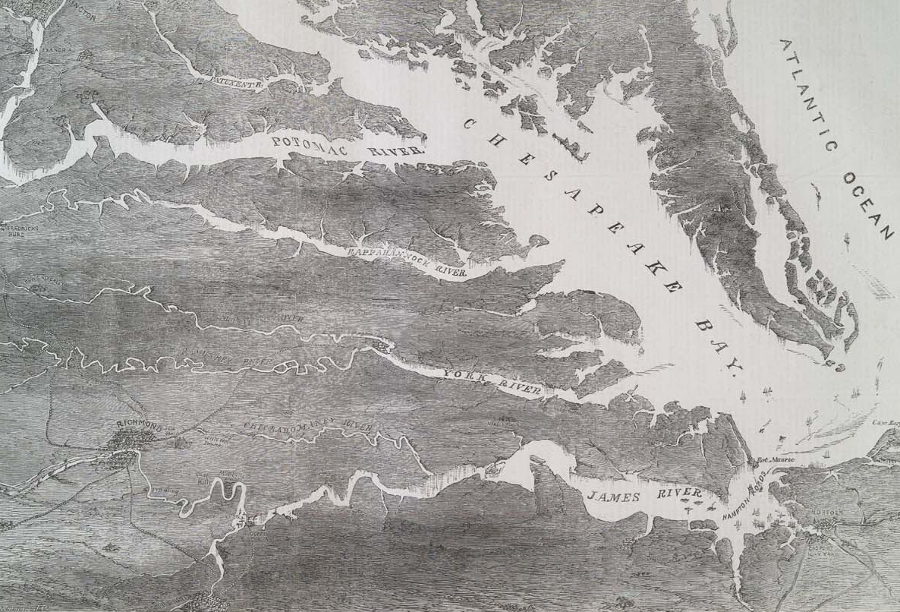
in the 1862 Peninsula Campaign, the Union Navy supplied McClellan's army via the York River and then the James River (after the "change in base")
Source: Illustrated London News, The Civil War in America: Scene of Operations in Eastern Virginia, Showing M'Clellan's Present Position (August 2, 1862)
The Military in Virginia
Virginia Places

















